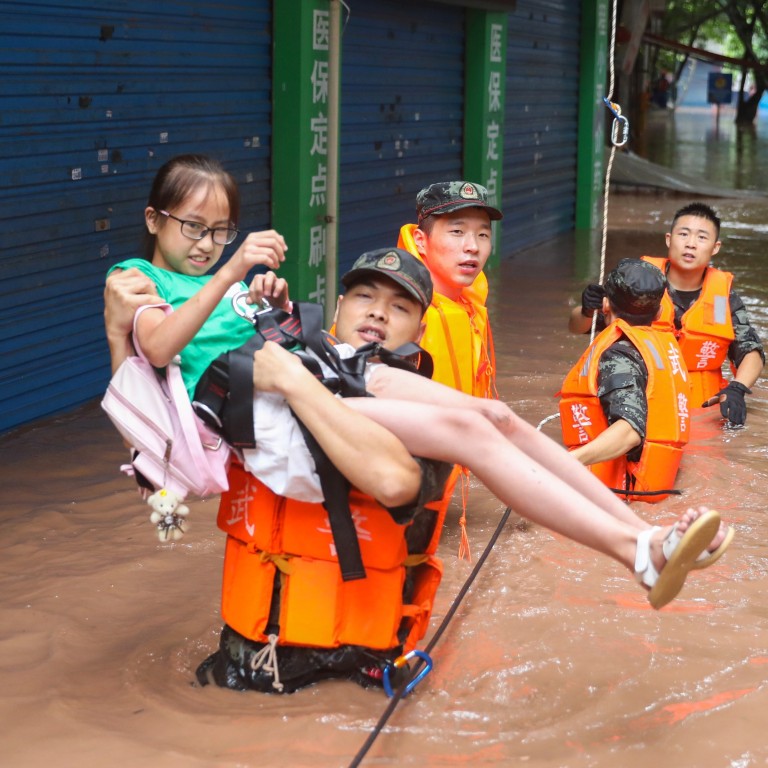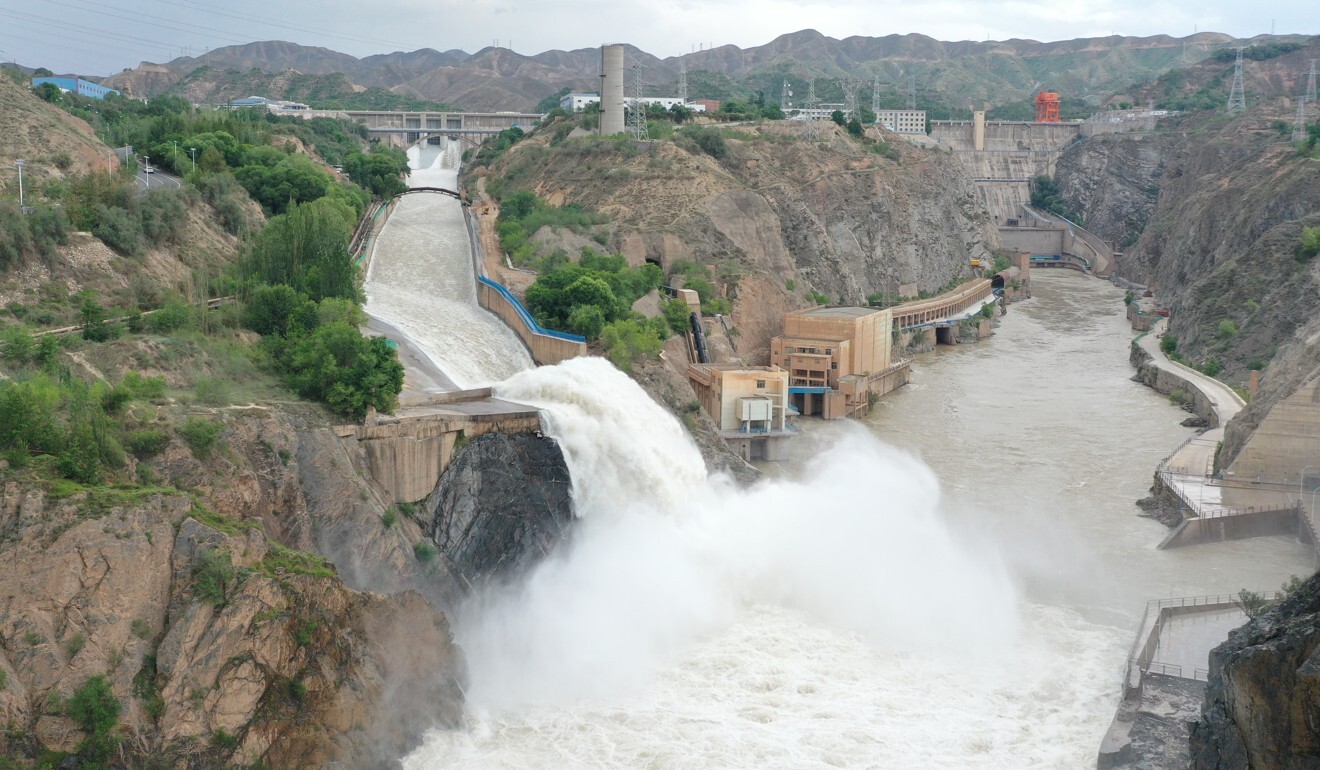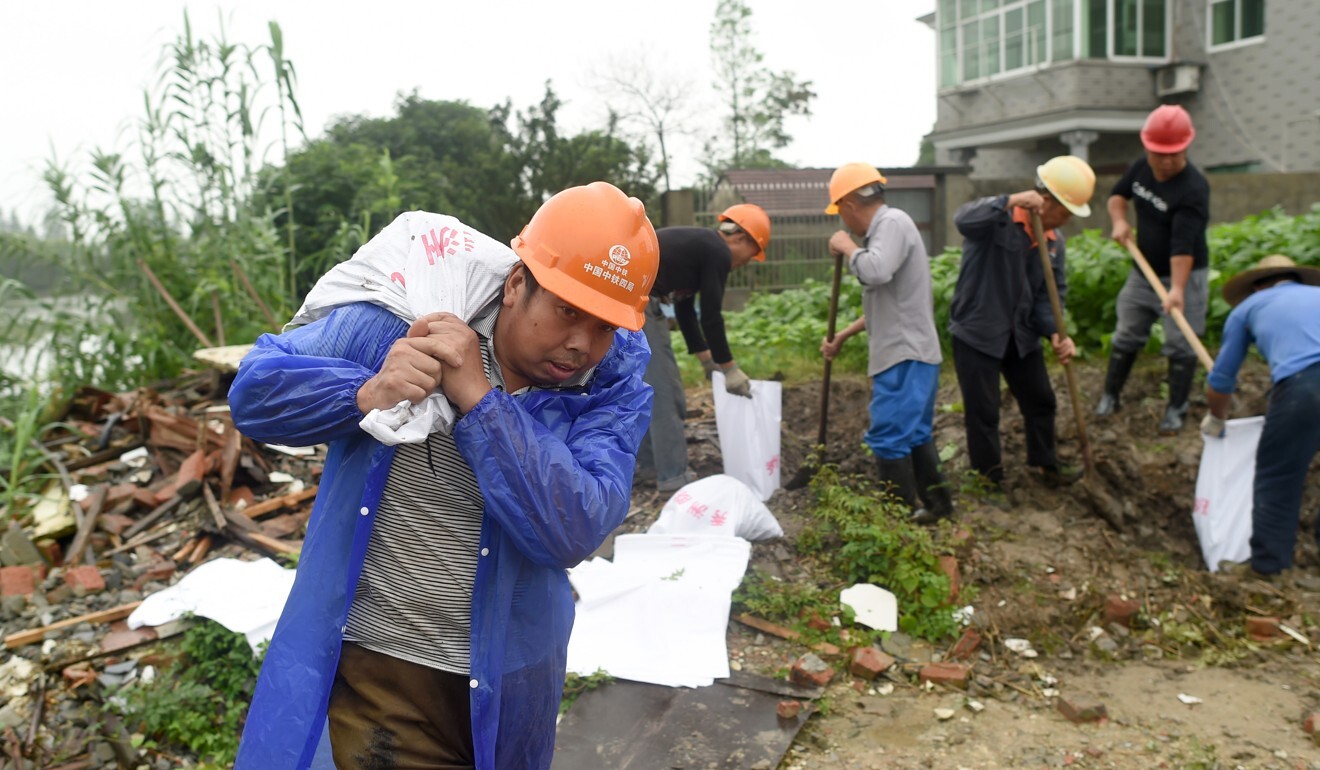
Concerns grow as China braces for more heavy rains and floods
- Reservoir water level at Three Gorges Dam on Yangtze River has risen by 12 metres in past 10 days and is nearing its maximum, Beijing says
- Economic cost of annual floods up 11 per cent from last year at US$7.1 billion
China’s battle with some of the worst flooding in decades has entered a crucial stage after more heavy rains boosted water levels in the upper reaches of the Yangtze River on Friday.
The inflow at the Three Gorges Dam, which spans Asia’s longest river, hit 61,000 cubic metres per second on Saturday morning, pushing its reservoir water level to 160 metres (525 feet), according to the Ministry of Water Resources.
The reservoir level has risen by almost 12 metres over the past 10 days and is nearing the dam’s design-maximum of 175 metres, the ministry said.
Chinese President Xi Jinping said on Friday that flood control efforts were at a key stage, as the heaviest rains tended to fall in late July and early August in central and northern China.
He also warned of potential flooding of the Yellow River, China’s second-longest waterway.
More than 20 million people in 24 provinces – including Jiangxi, Anhui, Hubei, Hunan, Chongqing and Guizhou – have been affected by the flooding in recent weeks. A total of 141 people have been reported dead or missing since early June and more than 1.7 million have been forced to relocate, according to the Ministry of Emergency Management.
The economic impact of the floods has been put at almost 50 billion yuan (US$7.1 billion), an increase of 11 per cent from the equivalent period of last year.
One of the places worst hit by the latest torrents is Hubei – the province that just a few months ago was the epicentre of the coronavirus outbreak – where 15 cities have initiated emergency food controls.
Across the province, huge helicopters have been working to dump tonnes of sand and gravel onto embankments to shore them up against the risk of breaching.

On Friday, large parts of Enshi – a Hubei city home to about 400,000 people – were flooded due to heavy rains and an overflowing Qingjiang River that runs through it. Such was the extent of the deluge that city officials upgraded their emergency response level three times – eventually to the highest possible – in less than five hours.
“It is really difficult for us,” an Enshi resident wrote on Weibo, China’s Twitter-like platform. “A small city like ours is poor and backward. After we survived the pandemic, we tried to resume work and production, and now we’re dealing with floods.”
Hubei’s emergency management bureau said on Saturday that across seven cities that had been particularly badly hit since Thursday, three people had been reported dead and a fourth was still missing. More than 38,000 people had been relocated, of which 22,000 were residents of Enshi, it said.
China’s National Meteorological Centre said heavy rains would continue to wreak havoc across Hubei, Anhui, Henan, Hunan and Guizhou this weekend, with downpours of between 100mm (four inches) and 180mm expected.

Meanwhile, authorities in Jiangxi on Saturday managed to plug a 180 metre breach in a dyke near Poyang Lake, after five days of effort.
And in the upper reaches of the Yangtze, Chongqing is bracing for what it expects to be the worst floods of the season.
Maritime officials there on Friday night issued a navigation warning and imposed temporary traffic controls to stop ships carrying dangerous goods, containers, dry bulk and other vessels with a gross tonnage of less than 600 tonnes from entering certain sections of the Yangtze.
According to the national cultural heritage administration, as of Thursday, more than 500 immovable cultural relics in 11 provinces had been damaged by the floods.

